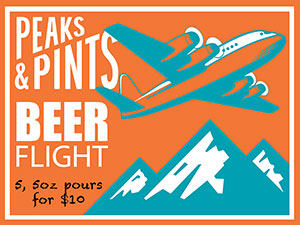 According The Oxford Companion to Beer, “the term ‘brown ale’ can easily be confusing, or at least not much more useful than the term “red wine.’” That confusion, however, is part of its allure, as the style leaves brewers plenty of room for interpretation. The brown ale has origins in 17th century England, where it was a name given to a dark-colored, mild ale. The American Brown is a style that home brewers have helped define over the past 30 years. The contemporary American Brown is flavorful, balanced and medium bodied, with more overall character than its early English cousins. American versions are also made with a majority of U.S.-grown barley and hops. The style, as the name suggests, is deep copper to brown in color. The brown is balanced, with a slight emphasis on maltiness. Roastedness, alongside the caramel and chocolate malt, is evident, but the maltiness is not overbearing, sticky or too sweet. Likewise, the hoppy-bitterness is low to medium in flavor and aroma. Brown ales might not be flashy, but they’re a lovely addition to Peaks and Pints’ daily flight: Craft Beer Crosscut1.16.18: A Flight of Brown Ales.
According The Oxford Companion to Beer, “the term ‘brown ale’ can easily be confusing, or at least not much more useful than the term “red wine.’” That confusion, however, is part of its allure, as the style leaves brewers plenty of room for interpretation. The brown ale has origins in 17th century England, where it was a name given to a dark-colored, mild ale. The American Brown is a style that home brewers have helped define over the past 30 years. The contemporary American Brown is flavorful, balanced and medium bodied, with more overall character than its early English cousins. American versions are also made with a majority of U.S.-grown barley and hops. The style, as the name suggests, is deep copper to brown in color. The brown is balanced, with a slight emphasis on maltiness. Roastedness, alongside the caramel and chocolate malt, is evident, but the maltiness is not overbearing, sticky or too sweet. Likewise, the hoppy-bitterness is low to medium in flavor and aroma. Brown ales might not be flashy, but they’re a lovely addition to Peaks and Pints’ daily flight: Craft Beer Crosscut1.16.18: A Flight of Brown Ales.
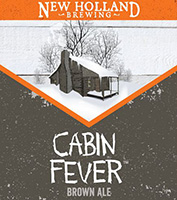 New Holland Cabin Fever
New Holland Cabin Fever
6.5% ABV, 25 IBU
Established in 1996, New Holland Brewing sits in Holland, Michigan but its seasonal sits in a remote cabin: “Robust in character yet smooth in delivery, Cabin Fever is a roasty brown ale and a hearty, comforting companion for long, mind-bending winters. Its rye, roast and raisin notes play off a subtle caramel sweetness and culminate in a dry finish. Excellent with roasts, stews, caramelized onions and snowfall.” Indeed. The taste has a malty-sweetness with a roasted chocolate malt flavoring. There are flavors of coffee and mocha present as well. There is a little bitterness, which helps enhance the dark chocolate and coffee notes.
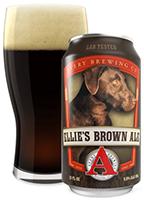 Avery Ellie’s Brown Ale
Avery Ellie’s Brown Ale
5.5% ABV, 28 IBU
T’was 24 years ago that Adam Avery (blessed be his name), smiled upon Boulder, Colorado and the world at large by opening Avery Brewing, which begat White Rascal Ale, which begat Out of Bounds Stout, which begat Ellie’s Brown Ale. This beautiful, deep russet brew has the sweet and somewhat nutty character of Avery’s late (1992-2002) Chocolate Lab, for which it is named. Avery adds Cluster hops at the beginning of the 60-minute boil primarily to add bitterness. Cascade and Fuggles hops are added at the middle and end of the boil respectively for their aromatic contributions. Ellie’s Brown has a rich maltiness with a complex caramel and roasted combination in the flavor profile for a lovely, balanced beer.
 Rogue Hazelnut Brown Nectar
Rogue Hazelnut Brown Nectar
5.6% ABV, 33 IBU
Oregon produces nearly 99 percent of all American hazelnuts. It’s the official state nut. It also boasts 230 craft breweries. Naturally, these local goodies make their way into a few beers around the Beaver State, including Rogue Ales’ Hazelnut Brown Nectar. At 1993’s American Homebrewers Association convention, Rogue Brewmaster John Maier tasted a brown ale with an unusual twist. His pal Chris Studach had added hazelnuts, an addition that later inspired the Oregon brewery to create the rich, malty, and medal-winning Hazelnut Brown Nectar. Its aroma is hazelnut, strong toasted malts, caramel and chocolate. Flavor opens very mild and thin, developing sweet hazelnut notes mixed with some toasted malt.
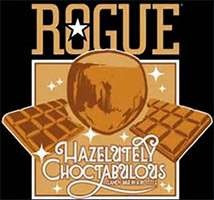 Rogue Hazelutely Choctabulous
Rogue Hazelutely Choctabulous
5.7% ABV, 51 IBU
For more than a decade Rogue Ale bartender blending the Oregon brewery’s Chocolate Stout and Hazelnut Brown Nectar, dubbing it a “Snickers.” Rogue Brewmaster John Maier finally said screw it and blended the beers before it reach the bars. The result is Rogue Hazelutely Choctabulous, a perfect blend of hazelnuts and chocolate. It’s dark and decadent with a rich nutty flavor up front followed by a chocolate truffle finish.
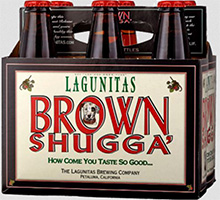 Lagunitas Brown Shugga
Lagunitas Brown Shugga
9.7% ABV, 51 IBU
Brown Shugga was created in 1997 after Lagunitas Brewing brewers attempted to rescue a failed batch of Olde GnarlyWine Ale by adding “boatloads of brown sugar” — or so the story goes, anyway. Super sweet notes of caramel and brown sugar are yanked back by piney hops that kick in with a bitterness that intensifies for two or three seconds before starting to fade. When the beer is cold the hop bitterness is the dominant flavor, but it mellows out as it warms up letting the malts come through more.
